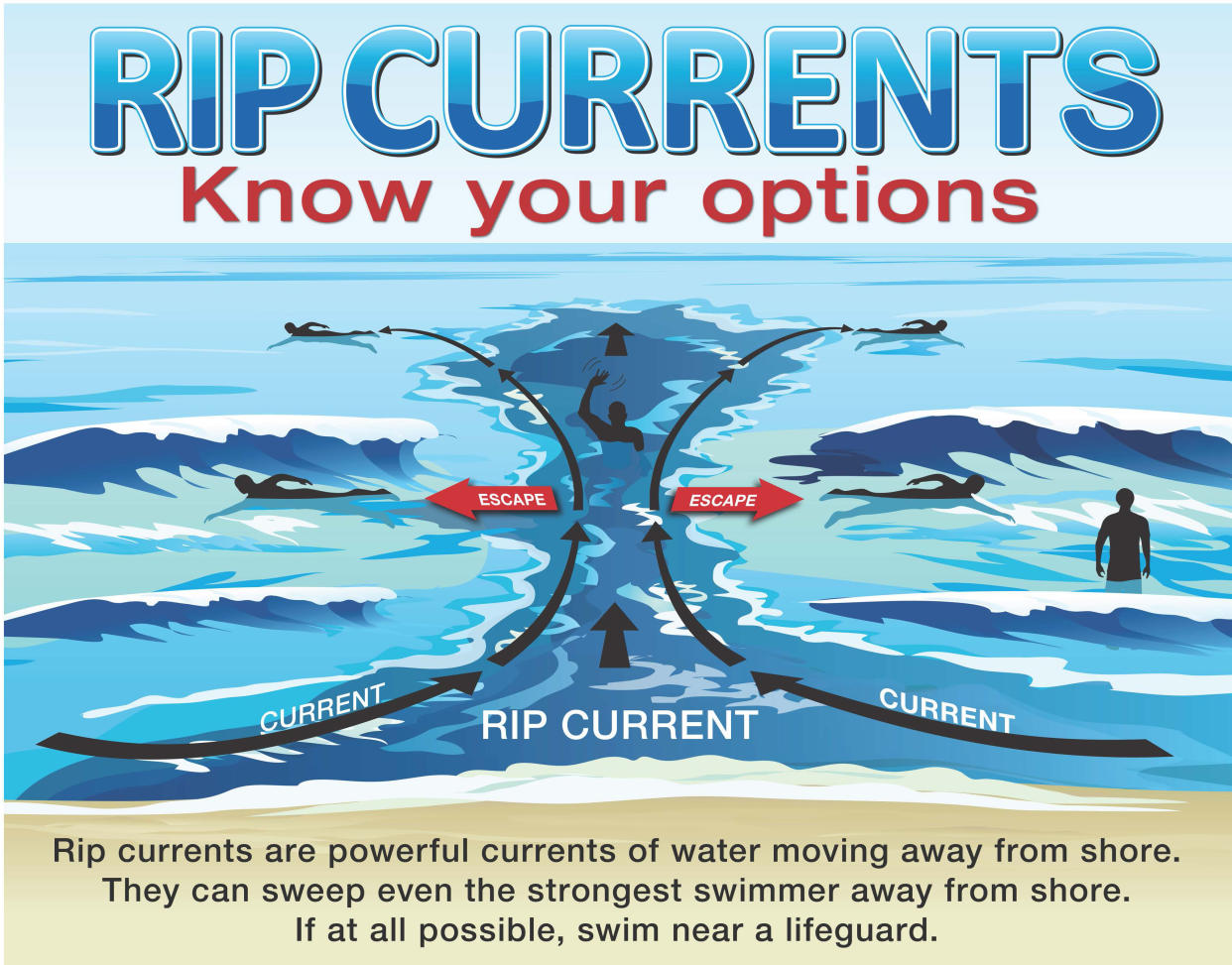Rip current safety: What they are and how to help

As Hurricane Lee churns in the Atlantic, a lot of uncertainty remained Monday about the exact path of the Category 3 storm with 120 mph maximum sustained winds.
No coastal watches or warnings were in effect as of Monday afternoon. The storm isn't expected to make landfall, but forecasters say it will weaken and grow in size, which means the storm has the potential to affect a more widespread area. By the end of the week, Lee is expected to be located offshore of the mid-Atlantic states and New England, according to National Hurricane Center Director Michael Brennan.
"What we're very confident in is there will be a tremendous amount of high waves and dangerous marine conditions that will translate to dangerous conditions at the beaches along much of the U.S. East Coast: high surf, rip currents," Brennan said in a Monday afternoon video update.
Here’s what to know about rip current safety and how to protect yourself and others.
What is a rip current?
A rip current is a powerful, narrow channel of water that flows away from the shore at surf beaches, including Great Lakes beaches, the United States Lifesaving Association says. They typically form at breaks in sandbars, and near structures like piers and jetties.
Rip currents are also different from rip tides. As the NOAA website explains, “A rip tide is a specific type of current associated with the swift movement of tidal water through inlets and the mouths of estuaries, embayments, and harbors.”
Why are rip currents dangerous?
Rip currents have been measured at speeds of more than 5 miles per hour, which is faster than an Olympic swimmer. They can quickly sweep away even the strongest of swimmers.
Generally, over 80% of rescues by surf beach lifeguards in the U.S. are in response to rip currents, according to the U.S. Lifesaving Association.
While rip currents don’t pull people underwater, they can pull a swimmer away from the beach beyond the breaking waves, according to the NOAA.
How to know if there's a rip current near you
Spotting a rip current can be tricky. According to NOAA, they can emerge whether it’s raining or sunny, and even when waves are only 2 or 3 feet high.
Here are some signs that a rip current might be nearby:
A narrow gap of darker water that’s seemingly calm between areas of breaking waves and whitewater
An area of water noticeably different in color
A break in the incoming waves
A line of foam or debris moving offshore
You can see some examples from the NOAA of what rip currents look like here.
How to protect yourself and others at the beach
If you’re headed to the beach, the U.S. Lifesaving Association advises to never swim alone and to always swim in an area that’s monitored by lifeguards, and consult them before entering the water.
Make sure that you and other members of your family can swim in the surf at the beach — pool swimming isn’t the same as beach swimming.
Rip currents can occur in any weather, so assume that they’re present at a surf beach and take the time to identify any of the indicators.
What to do if you're caught in a rip current
If you’re caught in a rip current, stay calm and don’t swim against the current, says the NOAA. Swim out of the rip current, parallel to shore, then follow breaking waves at an angle toward the beach.
If you feel like you won't be able to reach the shoreline, draw attention to yourself by yelling or waving for help.
The United States Lifesaving Association (USLA) estimates that over 100 people die each year due to rip currents in the US. Break the Grip of the Rip! https://t.co/u1AP5qKyC2pic.twitter.com/Io3gHRtrSA
— National Weather Service (@NWS) August 31, 2023
What to do if someone else is caught in a rip current
Immediately call a lifeguard or 911 for help.
If help isn’t immediately available, throw something that floats to the person in trouble.
If you must enter the water, do so with a flotation device and always keep it between you and the person in trouble.
In attempting to counter rip currents, human chains can be a dangerous rescue technique because they have the potential to create a multi-victim scenario if the rip current pulls additional people out into the water.
